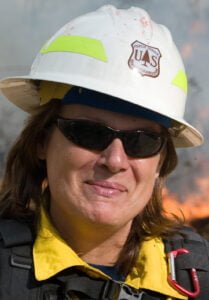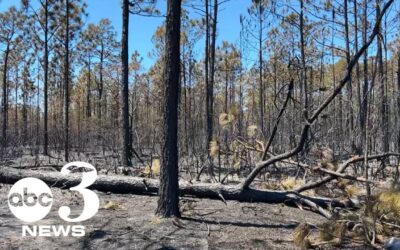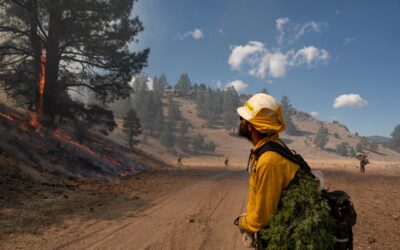Like many retirees, one of my favorite activities is complaining. Well, maybe not my favorite, but certainly I do my fair share. Kind of like Sport Bitching that I’ve written and spoken about in the past. Like I’ve said before, Sport Bitching can take you down a bad path. It can be destructive. And old timers like me can sit back with a drink in hand and complain about all you young upstarts who just don’t know how to fight fire like we used to do. I’m sure you’ve heard it. I know I have.
Of course, that’s all BS. Firefighters and incident management teams do a great job. The reason old timers think you’re not as good as we used to be is because the fires are different than they were back in the not so distant past. A big fire when I started in 1974 was 10,000 acres. That was considered a huge fire. Now 10,000 acres doesn’t get a second glance. When I was still working, I barely noticed when our fires were getting larger than 100,000 acres because they had been getting a bit larger each year.
Consider the number of days you spend on the fireline each year. It’s more than we used to do. It’s probably two or three times as much. So, I won’t listen to the old timer’s lamentations about you younger folks not knowing how to fight fire. As a matter of fact, it gets me pretty pissed off when I hear those complaining about you not being aggressive enough or IMTs always falling back and burning out. So let’s talk about what’s going on.
As is always the case, complicated problems cannot be fixed with simple answers. But the world we live in these days operates by sound bites. On one side of the fence I hear, “by God, if the Government just cut more trees we’d have fewer fires.” From the other side the bomb is lobbed over the fence, “our past forest management history is the cause.” “Just put out all the damned fire and quit letting them burn.” And “we shouldn’t put out the fires.” “It’s climate change!” “There’s no climate change!” “The urban interface is the problem.” On and on and on. When I hear these conversations, I just take a deep breath and sigh. It’s exhausting.
If you’ve read some of my articles or listened to my stories, you know I have multiple degrees, fought fires for more than 40 years and I started “controlled” burning (not slash units but brush) back in the 70s. Been there, done that, got all the shirts. And I’m sure everyone here has their own opinion on this topic.
Let me give you my two cents on this topic. And my two cents are worth at least a nickel now. It’s complicated. Yea, that’s it. It’s complicated. Is there climate change? Go ahead and argue about the causes of climate change if you want to, but it’s hotter and drier than it used to be. It’s hotter and drier than it was when I started as a rookie firefighter back in the 1970s. Fire seasons are longer. Longer seasons are a fact. And if a fire season is longer, it’s going to be drier by the end of the season resulting in more extreme burning conditions. Longer season = more extreme burning conditions and larger fires. That part of the equation is pretty simple.
Should we be cutting more trees? Sure, that would be great, but this is not a problem we can cut our way out of. The problem out there aren’t the big old fat valuable ponderosa pines. The problem is the understory, the brush and slash and those trees that used to be in the understory that are now co-dominant to those nice big old trees we want to protect. How do we pay to remove the biomass that has little value? That takes time and money. Sure, there will be commercial value to some of the trees we take out but the problem is… what’s the word? C’mon you can say it… it’s Complicated.
When we began fighting wildland fires back around 1900, it seemed like a reasonable idea. Have you read “America Burning” by Pyne or “The Big Burn” by Egan. Excellent history lessons for all firefighters that will give you some understanding of how our historical fire suppression policies have contributed to our current situation. But what do we do now? We can’t blame our forefathers for the mess we’re in. They made decisions based on the best information they had, politics and public opinion, just like we do now. But it’s true, past fire policies have contributed to our current problems.
Should we allow some fires to burn naturally without putting firefighters on them? When I was still employed by the USFS, I’d tell a group of industry folks or agency administrators and politicians that the best fire we can have is one we don’t have to put a single firefighter on. I mean, think about it. If a fire starts naturally in the back country and has little to no chance of coming out and doing any damage, why would we put young lives at risk and spend millions of dollars to put it out. That opinion didn’t go over well with that crowd. Do we have to put out jumpers or rappellers on every back country fire in September? Maybe some years we do, but all the time?
Of course we’re taking a huge risk when we do that. We’d better have our collective “stuff” together. Things have gone wrong when we do that. But we’ve had thousands of successes compared to the few failures. But we don’t advertise our successes. What was that word again? Oh yea, complicated.
What about the Wildland Urban Interface (WUI)? In years past, an initial attack engine and crew could arrive at a developing fire and find a good spot to anchor in and start fighting the fire. Now, they might arrive at the same location and there’s a rural subdivision. Their tactics have to be adjusted. Now the priority has become structure protection while the fire continues to grow. Whose responsibility is that? The local fire departments are quickly overwhelmed and the wildland agencies end up doing structure protection. Yea, it’s complicated.
When there’s a fire that overcomes the local agency, they call for mutual aid and quickly the State becomes involved. Almost at once the State will apply for a Fire Management Assistance Grant so the federal government through FEMA picks up most of the tab of fighting that fire. It’s not a federal fire but the feds end up picking up much of the costs.
Maybe that’s why the state and local agencies aren’t in a rush to enact more stringent zoning regulations. Why don’t state and local governments have ordinances for building materials, road widths and water supplies? I’ve watched counties in some of the most fire ravaged areas of the west turn down the requests by the fire chiefs for more stringent development ordinances. Nope, developers are allowed to subdivide with narrow roads, no water supplies, flammable materials and no clearance requirements. When a fire inevitably starts, those county commissioners, mayors and state politicians want to know why the fire is spreading and homes are burning. I wonder why.
I can’t tell you how bored I get when I hear the complaints about IMTs who implement the “big box” strategy and burn up the forest. Let’s forget about the current fuels, topography and weather situation. Just imagine yourself as the Ops Chief on the team telling the IC about your great plan for the fire. “If we can get 10 hotshot crews, 10 type 2 IA crews, 5 dozers, 5 strike teams of engines and 5 tactical tenders, I think we can hold this fire to 3000 acres.” The IC says, “yea well, all we’re getting from the GACC is 2 hotshot crews, 2 type 2 IA crews, 5 type 2 crews, 1 dozer, 1 strike team of engines and 1 tender. Come up with another plan.”
Do you wonder why we’re always falling back to the next best ridgetop? Fires have to compete with each other for resources. And as I used to tell the IMTs in my geographic area, “come up with a strategy commensurate with the resources you’re getting assigned. Not with the resources you want to have.” It’s not a pretty situation but it’s reality.
Wouldn’t it be nice if there was one easy answer for our wildland fire problem? There isn’t just one, but there are many. Let’s talk about some of them.
Prescribed burning. Yes, that has to be a big part of the answer. We need to reduce fuels on the landscape. But that’s not a panacea. I’ve watched fires during extreme conditions burn through old wildfire scars, fuels treatments and prescribed burns. But prescribed fire is a start. There’s going to be more fire on the landscape. Let’s choose when we want it. That may include natural ignitions that we manage.
Vegetation management. Thinning and vegetation projects have to be a part of the equation. But not timber projects chasing “the cut.” These thinning projects need to be designed specifically to reduce the threat of wildfire. Most thinning projects that I’ve been around had goals of forest restoration, wildfire risk reduction, habitat improvement, and oh yea, meeting the timber target. Let’s be honest. Many of those goals are competing with each other. They’re not necessarily complimentary.
Local Ordinances. Wouldn’t you love to be an Engine Strike Team leader showing up to do structure protection at a subdivision that has wide roads, hydrants, homes with safe building materials and that are landscaped and maintained appropriately? I get a giddy feeling just thinking about that one.
Response. This one will require it’s own article sometime in the future. But suffice it to say, our current organization is not up to our current wildfire situation. It’s not your fault or mine. You’ve been doing an outstanding job for many years. That is if we knew exactly what our job was. Is our job fuels management? Yes. Suppression? Yes. Dealing with the politicos? Yes. The list goes on and on. But it’s confusing. It’s confusing because it’s complicated!
Funding. Yes, the current fire problem is going to require a very significant increase in future agency budgets. Think of an equation that isn’t balanced. On one side of the equation is the amount of necessary work I mentioned above. On the other side of the equation is the workforce and budget. It does not balance. It hasn’t for years.
If Gifford Pinchot was going to design a national fire management organization anticipating our current fuels and climate situation, I bet it wouldn’t look like what we have now. Our future fire organizations may look a whole lot different than they do today. Nationally, we have hundreds of agencies with responsibility for wildfire management. How could that ever be fixed? And that one is really complicated!
So the next time you hear an old timer like me suggest a simple answer to this complicated question, I want you to say…. It’s Complicated.
More stories are available at BobbieOnFire.com and my entire memoir, Both Sides Of The Fire Line is available from Chicago Review Press or any bookstore.
Now Available
Both Sides of the Fire Line is Bobbie Scopa’s uplifting memoir of bravely facing the heat of fierce challenges, professionally and personally. It’s available for preorder now.
Order from Amazon Order from Barnes & Noble

 Bobbie Scopa started her career as a seasonal firefighter in 1974. After graduating from Arizona State University, she went on to work in fire and natural resource management. Eventually she left the wildand agencies to work full time for a structure fire department. She finished her Masters in Forestry at NC State then went back to the US Forest Service and BLM eventually becoming the Assistant Regional Fire Director in Region 6. Bobbie has spent many years working as a type 1 and 2 Operations Section Chief. You can listen to Bobbie tell audio stories from her long career at BobbieOnFire.com. She has also recently completed her memoir titled “Both Sides Of The Fire Line”. It will be available through Chicago Review Press late summer of 2022.
Bobbie Scopa started her career as a seasonal firefighter in 1974. After graduating from Arizona State University, she went on to work in fire and natural resource management. Eventually she left the wildand agencies to work full time for a structure fire department. She finished her Masters in Forestry at NC State then went back to the US Forest Service and BLM eventually becoming the Assistant Regional Fire Director in Region 6. Bobbie has spent many years working as a type 1 and 2 Operations Section Chief. You can listen to Bobbie tell audio stories from her long career at BobbieOnFire.com. She has also recently completed her memoir titled “Both Sides Of The Fire Line”. It will be available through Chicago Review Press late summer of 2022.

